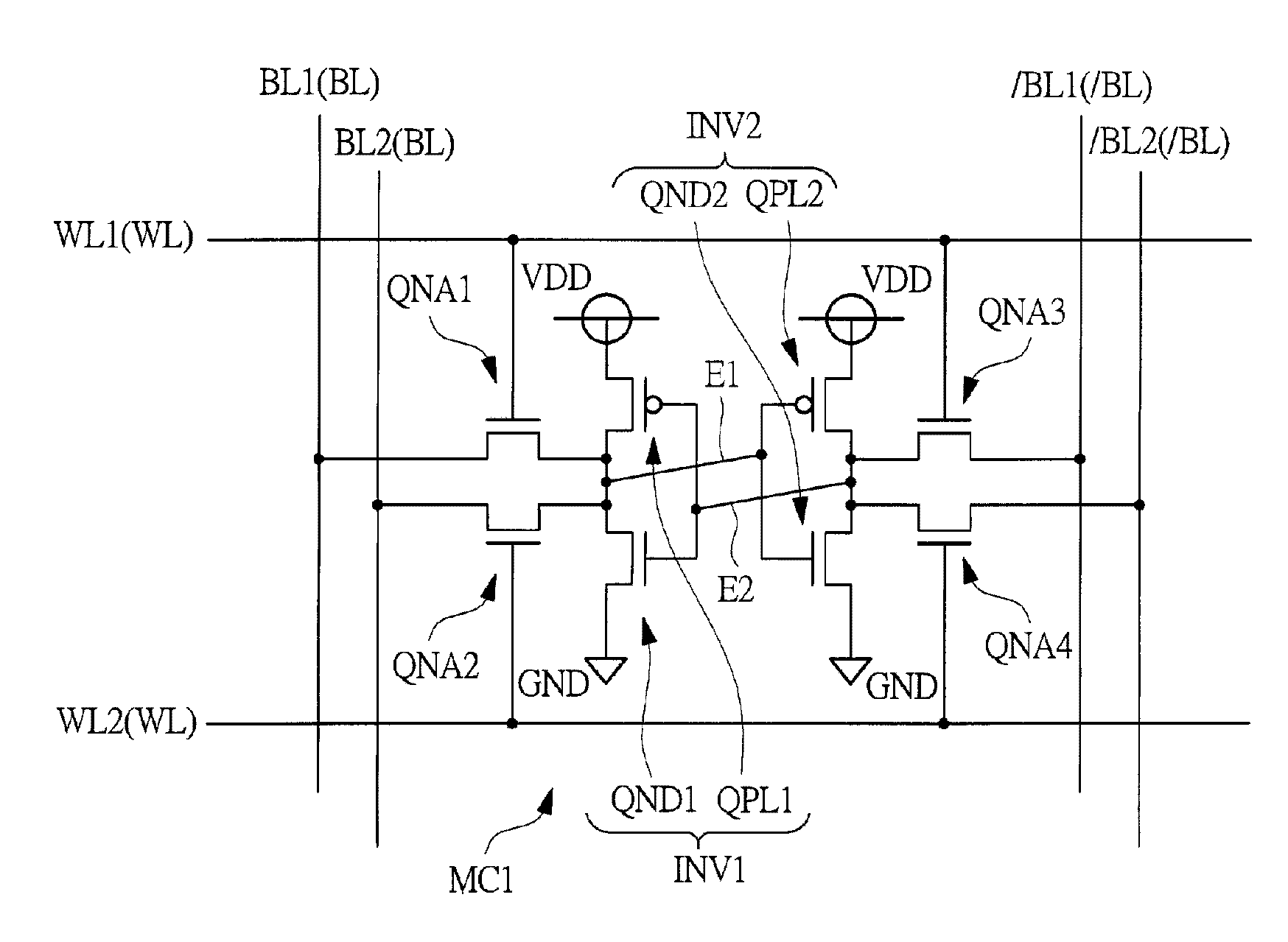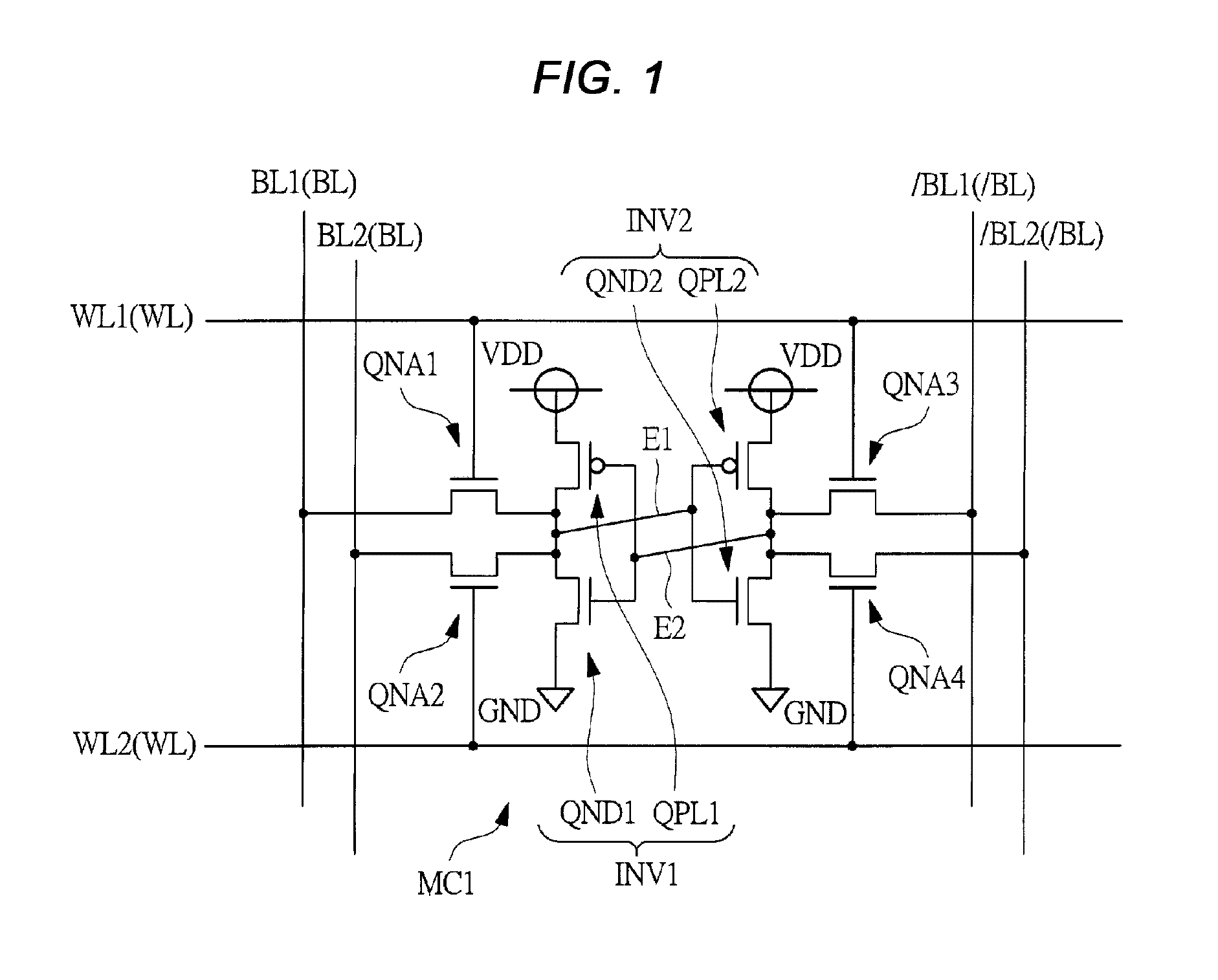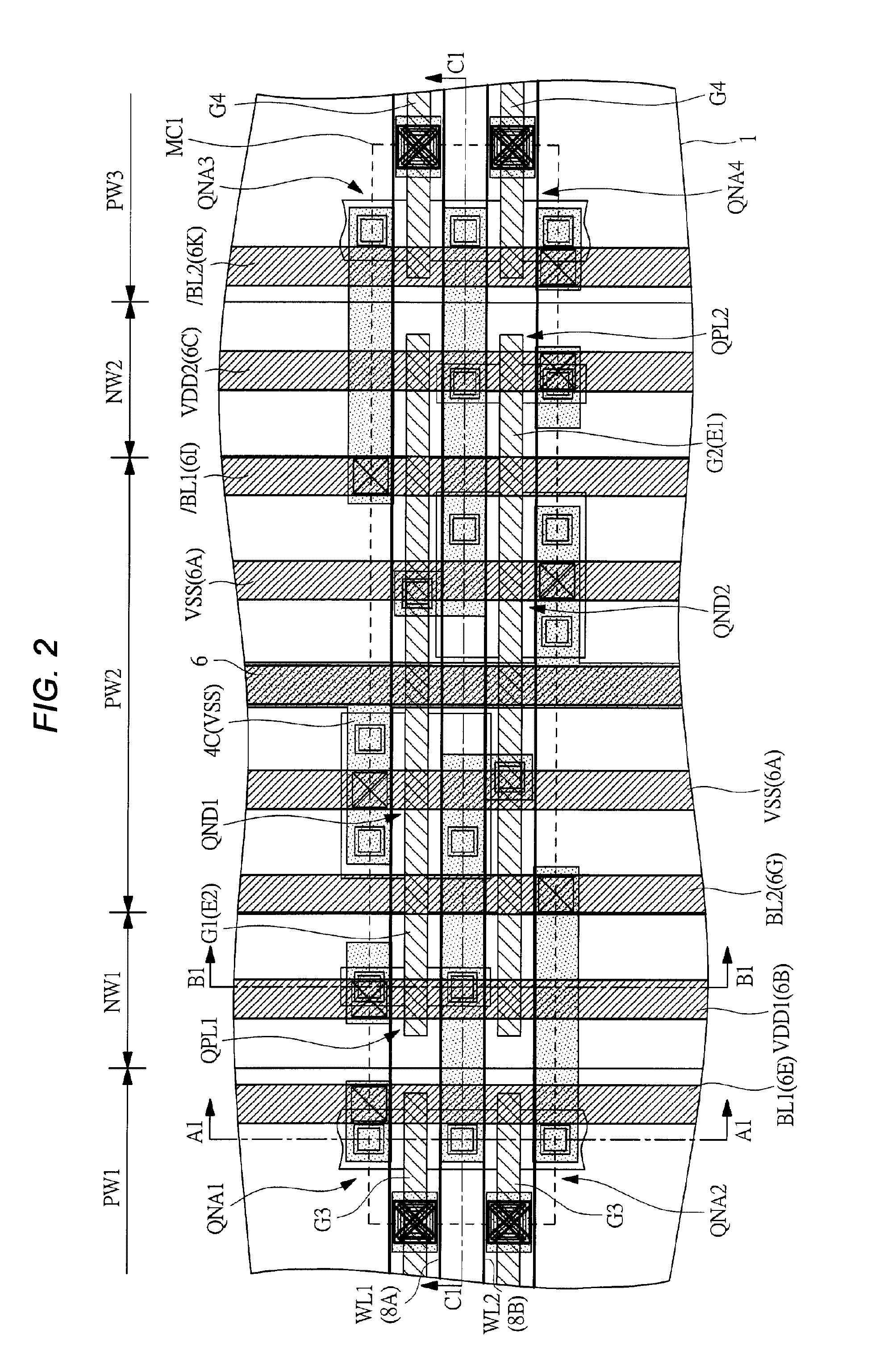Semiconductor device
a technology of semiconductor devices and semiconductor chips, applied in information storage, static storage, digital storage, etc., can solve the problems of multi-bit error, multi-bit error, soft error between adjacent bits becoming more likely to occur, etc., to achieve the effect of improving reliability in a semiconductor devi
- Summary
- Abstract
- Description
- Claims
- Application Information
AI Technical Summary
Benefits of technology
Problems solved by technology
Method used
Image
Examples
first embodiment
[0071]FIG. 1 shows a circuit diagram of one memory cell (static memory cell) MC1 in a dual-port SRAM in a first embodiment. FIG. 2 shows a plan view of relevant parts of the memory cell MC1 in the first embodiment. FIG. 3 shows a plan view of relevant parts representing from a silicon substrate (semiconductor substrate) 1 to a first wiring layer M1 of the plan view of relevant parts in FIG. 2. FIG. 4 shows a plan view of relevant parts representing from a second wiring layer M2 to a third wiring layer M3 of the plan view of relevant parts in FIG. 2. FIG. 5 shows a section view of relevant parts when viewed in the arrow direction along A1-A1 line, B1-B1 line, and C1-C1 line of the plan view of relevant parts in FIG. 2. FIG. 6 corresponds to the circuit diagram in FIG. 1, particularly, showing an equivalent circuit diagram in which each element and wire are rearranged according to an actual layout. FIG. 7 shows a plan view of relevant parts of three memory cells MCA1, MCA2 and MCA3 ne...
second embodiment
[0119]FIG. 17 shows a plan view of relevant parts of one memory cell (static memory cell) MC2 in a dual-port SRAM in a second embodiment. FIG. 18 shows a plan view of relevant parts representing from the silicon substrate 1 to the first wiring layer M1 of the plan view of relevant parts in FIG. 17. FIG. 19 shows a plan view of relevant parts representing from the second wiring layer M2 to the third wiring layer M3 of the plan view of relevant parts in FIG. 17. FIG. 20 shows an equivalent circuit diagram in which each element and wire are arranged according to an actual layout of the memory cell MC2 in the second embodiment. FIG. 21 shows a plan view of relevant parts of three memory cells MCB1, MCB2 and MCB3 neighboring in the column direction in the dual-port SRAM in the second embodiment. FIG. 22 shows an explanatory diagram of a plurality of memory cells MCB arranged in the row direction and the column direction in the dual-part SRAM in the second embodiment. The dual-port SRAM o...
third embodiment
[0142]In the above-mentioned first and second embodiments, the example is shown, in which the structure of the present invention is applied to the dual-port SRAM. In a third embodiment, an example is shown, in which the structure of the present invention is applied to a single-port SRAM.
[0143]FIG. 27 shows a circuit diagram of one memory cell (static memory cell) MC3 in the single-port SRAM in the third embodiment. FIG. 28 shows a plan view of relevant parts of the memory cell MC3 in the third embodiment. FIG. 29 shows a plan view of relevant parts representing from the silicon substrate 1 to the first wiring layer M1 of the plan view of relevant parts in FIG. 28. FIG. 30 shows a plan view of relevant parts representing from the second wiring layer M2 to the third wiring layer M3 of the plan view of relevant parts in FIG. 28. FIG. 31 corresponds to the circuit diagram in FIG. 27, particularly showing an equivalent circuit diagram in which each element and wire are rearranged accordi...
PUM
 Login to View More
Login to View More Abstract
Description
Claims
Application Information
 Login to View More
Login to View More - R&D
- Intellectual Property
- Life Sciences
- Materials
- Tech Scout
- Unparalleled Data Quality
- Higher Quality Content
- 60% Fewer Hallucinations
Browse by: Latest US Patents, China's latest patents, Technical Efficacy Thesaurus, Application Domain, Technology Topic, Popular Technical Reports.
© 2025 PatSnap. All rights reserved.Legal|Privacy policy|Modern Slavery Act Transparency Statement|Sitemap|About US| Contact US: help@patsnap.com



